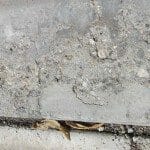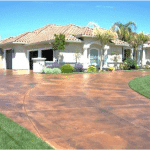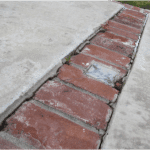Walks & patios
 Patio & Deck Safety – Maintenance Tips
Patio & Deck Safety – Maintenance Tips
 Tree Root Damage and Causes
Tree roots damage concrete driveways and may need to be trimmed back or removed. Several solutions exist for this, but be careful if it’s the neighbors tree.
Tree Root Damage and Causes
Tree roots damage concrete driveways and may need to be trimmed back or removed. Several solutions exist for this, but be careful if it’s the neighbors tree.
 Deteriorated and Flaking Concrete Finish: Why And Is It Structurally Strong?
Concrete will have deterioration and flaking evidence for several reasons. One is weather, two is...
Deteriorated and Flaking Concrete Finish: Why And Is It Structurally Strong?
Concrete will have deterioration and flaking evidence for several reasons. One is weather, two is...
 Stains and Different Shades of Color
Splotchy or different shades on the concrete drive or walk. Is the concrete defective? Do I need to worry?
Stains and Different Shades of Color
Splotchy or different shades on the concrete drive or walk. Is the concrete defective? Do I need to worry?
 Brick Dividers and Edging in Home Landscaping
When brick dividers or edging settle or sink they may become a safety concern.
Brick Dividers and Edging in Home Landscaping
When brick dividers or edging settle or sink they may become a safety concern.